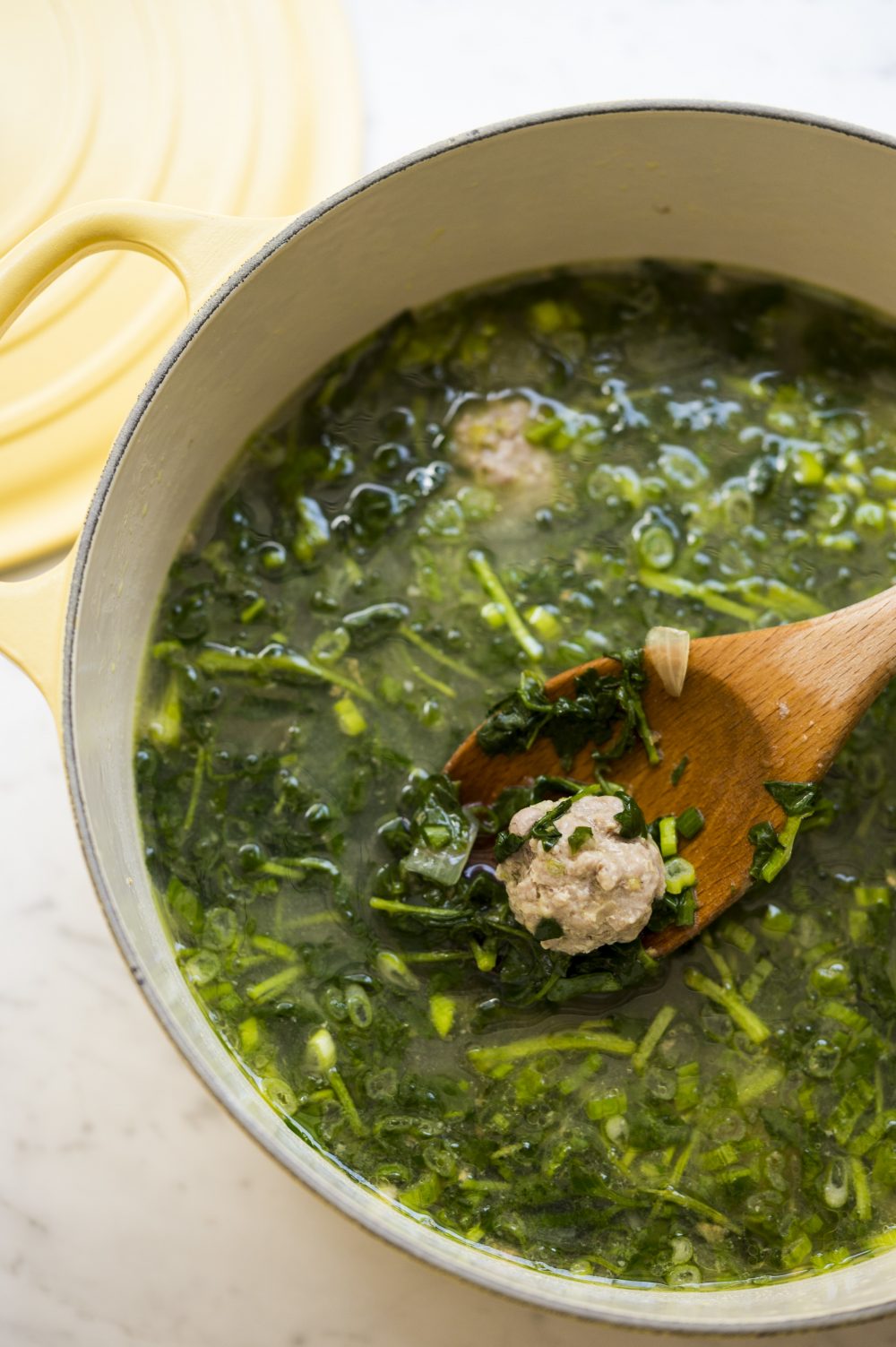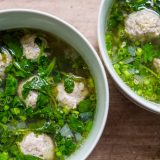Soben Pin is hungry, and so are her guests.
Talking and shopping has eaten up the first half of this snowy Saturday in Lowell, Massachusetts. To assemble the ingredients for an informal cooking lesson, we’ve visited two grocery stores—a Cambodian market as well as a local supermarket chain store.
The day so far has been a crash course in the New England mill town’s Khmer culture. Lowell claims the second-largest Cambodian population outside of Cambodia and is home to the KhmerPost USA, the newspaper Soben and her husband, Roger, started almost 10 years ago.
Now it’s 4 p.m. and no one has had a bite since breakfast. So Soben pivots. We’re going to make a quick soup, she announces—a pick-me-up to get us through to dinner. It’s something she makes in moments like this, when the 31-year-old struggles to summon the energy to prepare a meal for her husband and their 6-year-old son, Aiden.
We begin with a pot of water. As it comes to a boil, Soben washes a bunch of watercress. She eyeballs an amount, trims the leaves and sets it aside.
“The thing about my cooking is I don’t measure how much,” she says as she pours salt into the bowl of a large nylon spoon.
She folds the salt into ground pork along with sugar, chicken bouillon powder, white pepper and thinly sliced scallions. “If you don't mix this ahead, before you put it in the pot,” she says, “your meat will be really plain. You would have really good soup, but there would be no kick in the meat.”
Soben’s culinary skills were ingrained over years of cooking for her family. Her father brought her and her brother and sister to the U.S. from the Trà Vinh province in Vietnam in 2000, when Soben was 14. (Her mother and three other siblings stayed behind.) Before going to college, she and her sister routinely prepared lunch and dinner—an experience that’s left an indelible imprint, even if she cooks only sparingly these days. As she handles one ingredient after the next, one notices the marks of a seasoned cook: familiarity, efficiency and ease.
By this time, the water is boiling. Soben uses a teaspoon to scoop up balls of pork like cookie dough. She drops them into the boiling water without shaping them. “In 10 minutes we have soup,” she declares.
As the pork poaches, she explains that some cooks in Vietnam sauté the meat before adding water. “But I like to do this, because our family always made it—my mom, and me and my sister—we always do this. So I stick to it that way.”
Soben tastes the soup after a few minutes. “Is it enough?” she asks aloud. “Almost.” She doctors the broth with the same ingredients she used to season the pork. Then she peels and slices ginger.
“The secret about cooking pork is you add ginger.” She describes the slick, heavy aftertaste that pork can leave on the tongue. “Ginger does it—it cuts that thing. I don’t know how to explain it.” She drops a few slices into the simmering soup.
In goes the watercress. She tastes again, then adds a final flourish of sliced scallions. They float on the soup’s surface. “OK. That’s it.”
For a soup made in about 25 minutes, it has wonderful flavor. With the wilted greens and the small, tender meatballs, it’s reminiscent of an Italian wedding soup, but has a markedly different flavor profile, thanks to the ginger and scallions. It’s brighter, clearer and sharper.
When I ask Soben for its name, she hesitates. “It’s not on the restaurant menu, but if you go to a Vietnamese buffet, you see this.” No matter. We eagerly slurp up the nameless soup before preparing the main meal.
It takes a bit of research, but later I learn that Soben’s soup is an example of canh—a category of quick, brothy Vietnamese soups that, in contrast with labor-intensive pho, are eaten every day. Andrea Nguyen, author of “Into the Vietnamese Kitchen,” explains that canh (KUN) is an essential part of a typical Vietnamese meal.

“You have canh, then you have a stir-fry, you have a vegetable, a little protein. And then you have rice. So it’s four things, and it would be served all together, so you can help yourself to whatever you want,” Nguyen says. “And you can have canh at all different times of the meal, not just the beginning.”
We found several variations—some sour, some vegetable-forward, others seafood-based—but the unifying factor is simplicity.
We stayed true to that simplicity as we adapted Soben’s recipe, using pork meatballs and watercress (though baby spinach will work, too) for the backbone of the soup. But we made a few changes—mostly by scaling up our ingredients—so that our canh could serve as dinner on its own.




